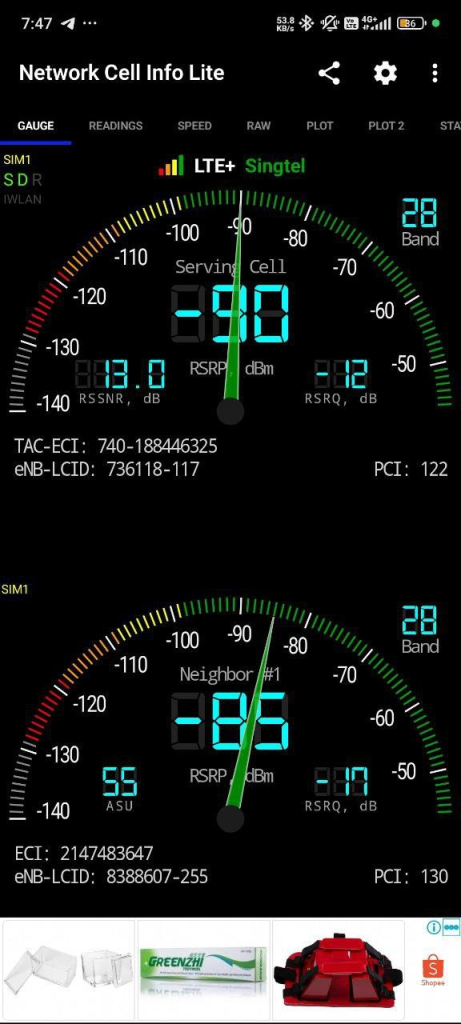Recently, Singtel’s B28 700 MHz frequency has been spotted in the airwaves, and it’s raising quite a few eyebrows among tech enthusiasts. Band 28 (B28) operates at 700 MHz, a lower frequency compared to commonly used LTE bands like Band 3 (1800 MHz) and Band 7 (2600 MHz). But why is this significant?
What Makes B28 at 700 MHz Special?

One of the key advantages of Band 28 is its ability to provide wider coverage. Lower frequency bands like 700 MHz can penetrate walls and other obstacles more effectively than higher frequency bands. This makes B28 particularly valuable in rural areas or indoors, where coverage might be more challenging. In contrast, LTE bands like 3 or 7, which operate at higher frequencies, tend to offer higher data speeds but have more limited coverage in comparison.
We can confirm the existence of Band 28 with our reader Yusoff’s screen shot below (using Samsung Service mode).

A Response to the 3G Shutdown?
There’s speculation that the emergence of B28 in Singtel’s network is linked to the upcoming 3G shutdown, which is scheduled for November 1. Many telecom providers, including Singtel, are phasing out 3G networks to free up spectrum and resources for more advanced technologies like 4G and 5G.
As 3G shuts down, the need to fill coverage gaps left by its absence becomes critical. This is where Band 28 could play a pivotal role. Given its broader range and better indoor penetration, Singtel might be deploying B28 to cover areas previously served by 3G, ensuring seamless coverage for users in those spots.
Looking Ahead: A More Robust Network?
With the combination of higher frequency bands like Band 3 and Band 7 for fast data speeds, and the addition of B28 for more extensive coverage, Singtel is likely enhancing its overall network performance. This move could be a strategy to ensure that users experience uninterrupted service even after the 3G networks are decommissioned.
As Singtel continues to evolve its network, the introduction of Band 28 could be a promising step in providing better service, especially in hard-to-reach areas. Whether you’re in a dense urban environment or a rural area, you might notice the difference in coverage once the B28 deployment fully takes effect.
What Does This Mean for Users?
For consumers, this could mean fewer dropped connections and stronger signals in places where 3G once filled the gaps. It also signals that Singapore’s telco infrastructure is moving towards a more future-proof 4G and 5G environment, where lower frequency bands like B28 ensure you stay connected, no matter where you are.
With 3G going offline soon, keep an eye out for changes in your signal strength—you might just be benefiting from the newly deployed Band 28 at 700 MHz!





